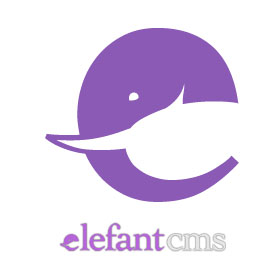
In this tutorial, we will show you how to install and configure Elefant CMS on Ubuntu 16.04. For those of you who didn’t know, Elefant is a refreshingly simple PHP content management system and web framework. Elefant is easy to use and straightforward for all levels of users. Elefant is also secure, extremely fast, well-documented, and well-tested, making it an ideal platform for web developers to build on their own custom web applications.
This article assumes you have at least basic knowledge of Linux, know how to use the shell, and most importantly, you host your site on your own VPS. The installation is quite simple and assumes you are running in the root account, if not you may need to add ‘sudo‘ to the commands to get root privileges. I will show you the step-by-step installation of Elefant CMS on a Ubuntu 16.04 server.
Prerequisites
- A server running one of the following operating systems: Ubuntu 16.04.
- It’s recommended that you use a fresh OS install to prevent any potential issues.
- SSH access to the server (or just open Terminal if you’re on a desktop).
- A
non-root sudo useror access to theroot user. We recommend acting as anon-root sudo user, however, as you can harm your system if you’re not careful when acting as the root.
Install Elefant CMS on Ubuntu 16.04
Step 1. First, make sure that all your system packages are up-to-date by running the following apt-get commands in the terminal.
sudo apt-get update sudo apt-get upgrade
Step 2. Install LAMP (Linux, Apache, MariaDB, PHP) server.
A Ubuntu 16.04 LAMP server is required. If you do not have LAMP installed, you can follow our guide here. Also, install all required PHP modules:
sudo apt-get install php5 libapache2-mod-php5 php5-xmlrpc php5-mysql php5-curl php5-gd
Step 3. Installing Composer.
We recommend using Composer, the PHP dependency manager, as the best way to install Elefant. If you don’t have a Composer, you can install it by running the following command:
apt-get install curl curl -sS https://getcomposer.org/installer | php mv composer.phar /usr/local/bin/composer
Step 4. Installing Elefant CMS.
Download the latest stable version of Elefant CMS, At the moment of writing this article it is version 1.3.12:
cd /var/www composer create-project elefant/cms --stability=dev your-domain.com
Step 5. Configuring MariaDB for Elefant CMS.
By default, MariaDB is not hardened. You can secure MariaDB using the mysql_secure_installation script. you should read and below each step carefully which will set a root password, remove anonymous users, disallow remote root login, and remove the test database and access to secure MariaDB:
mysql_secure_installation
Configure it like this:
- Set root password? [Y/n] y - Remove anonymous users? [Y/n] y - Disallow root login remotely? [Y/n] y - Remove test database and access to it? [Y/n] y - Reload privilege tables now? [Y/n] y
Next, we will need to log in to the MariaDB console and create a database for the Elefant CMS. Run the following command:
mysql -u root -p
This will prompt you for a password, so enter your MariaDB root password and hit Enter. Once you are logged in to your database server you need to create a database for Elefant CMS installation:
SET GLOBAL sql_mode=''; CREATE USER elefant; CREATE DATABASE elefantdb; GRANT ALL PRIVILEGES ON elefantdb.* TO 'elefant'@'localhost' IDENTIFIED BY 'your-password' WITH GRANT OPTION; FLUSH PRIVILEGES; quit
Step 6. Configuring Apache web server for Elefant CMS.
Create a new virtual host directive in Apache. For example, create a new Apache configuration file named ‘elefant.conf’ on your virtual server:
sudo a2enmod rewrite touch /etc/apache2/sites-available/elefant.conf ln -s /etc/apache2/sites-available/elefant.conf /etc/apache2/sites-enabled/elefant.conf nano /etc/apache2/sites-available/elefant.conf
Add the following lines:
<VirtualHost *:80> ServerAdmin admin@yourdomain.com DocumentRoot /var/www/html/your-domain.com/ ServerName your-domain.com ServerAlias www.your-domain.com <Directory /var/www/html/your-domain.com/> Options FollowSymLinks AllowOverride All Order allow,deny allow from all </Directory> ErrorLog /var/log/apache2/your-domain.com-error_log CustomLog /var/log/apache2/your-domain.com-access_log common </VirtualHost>
Now, we can restart the Apache webserver so that the changes take place:
systemctl restart apache2.service
Step 7. Accessing Elefant CMS.
Elefant CMS will be available on HTTP port 80 by default. Open your favorite browser and navigate to http://yourdomain.com/install/ or http://server-ip/install/ and complete the required steps to finish the installation. If you are using a firewall, please open port 80 to enable access to the control panel.
Congratulations! You have successfully installed Elefant CMS. Thanks for using this tutorial for installing the Elefant content management system on your Ubuntu 16.04 system. For additional help or useful information, we recommend you check the official Elefant CMS website.